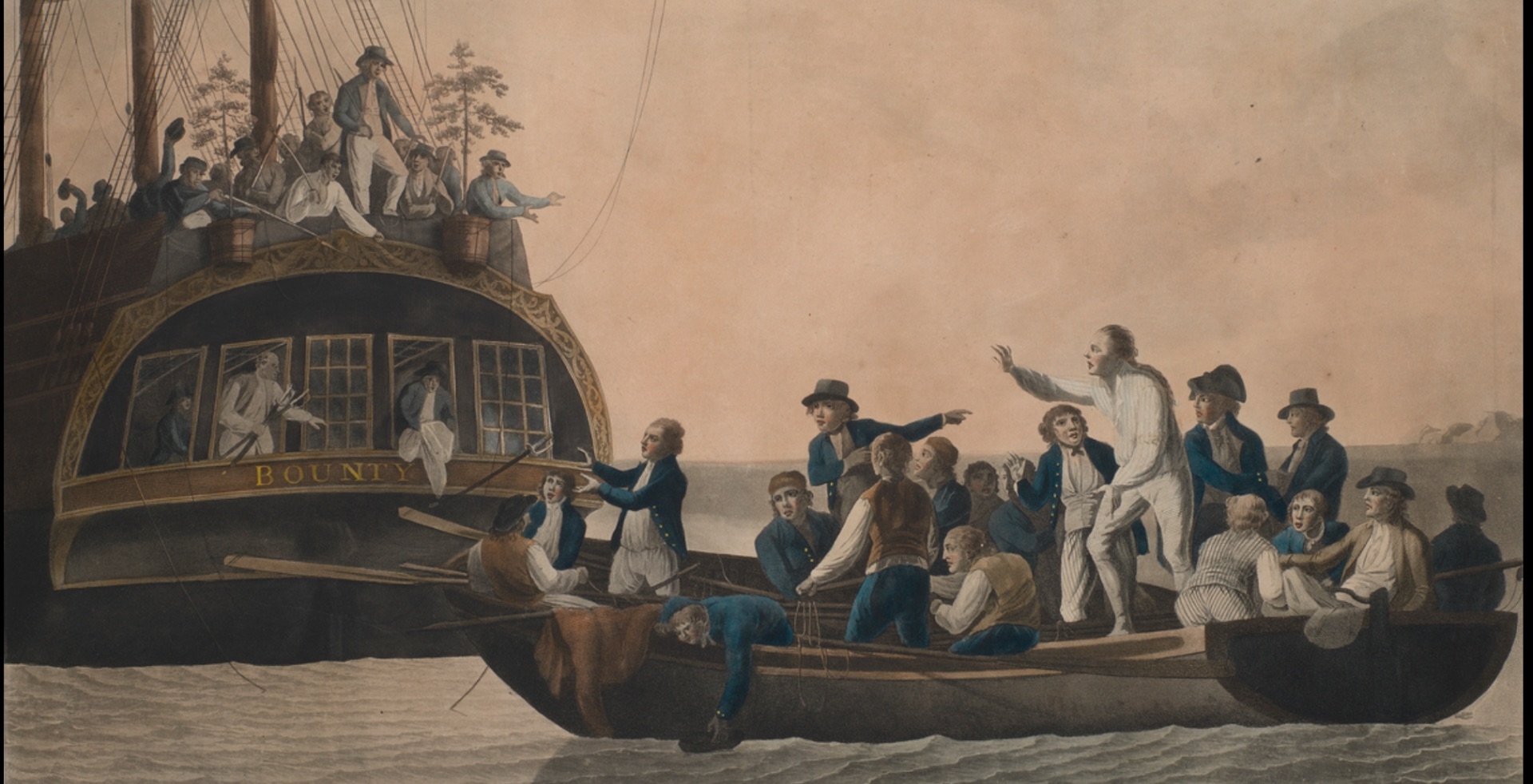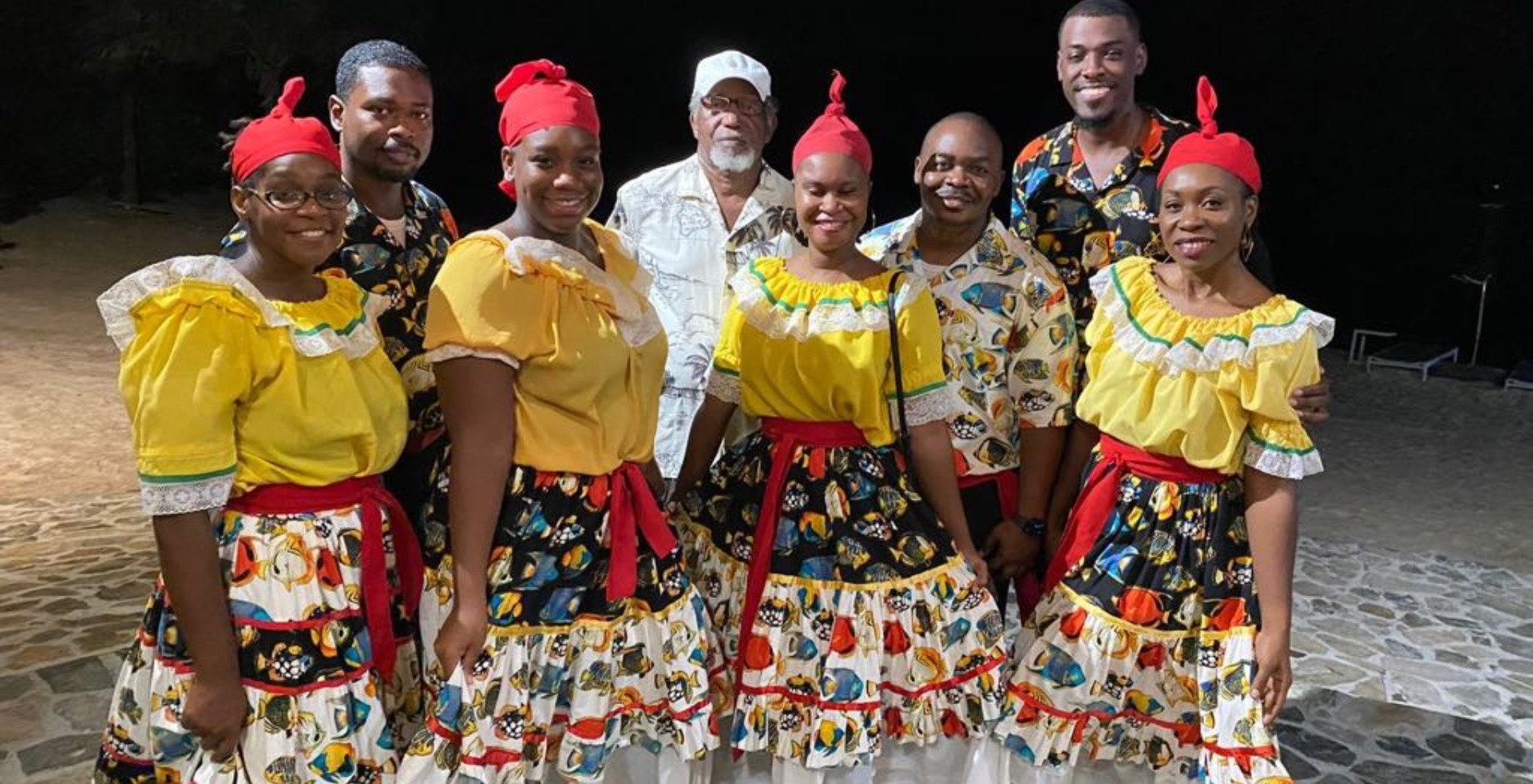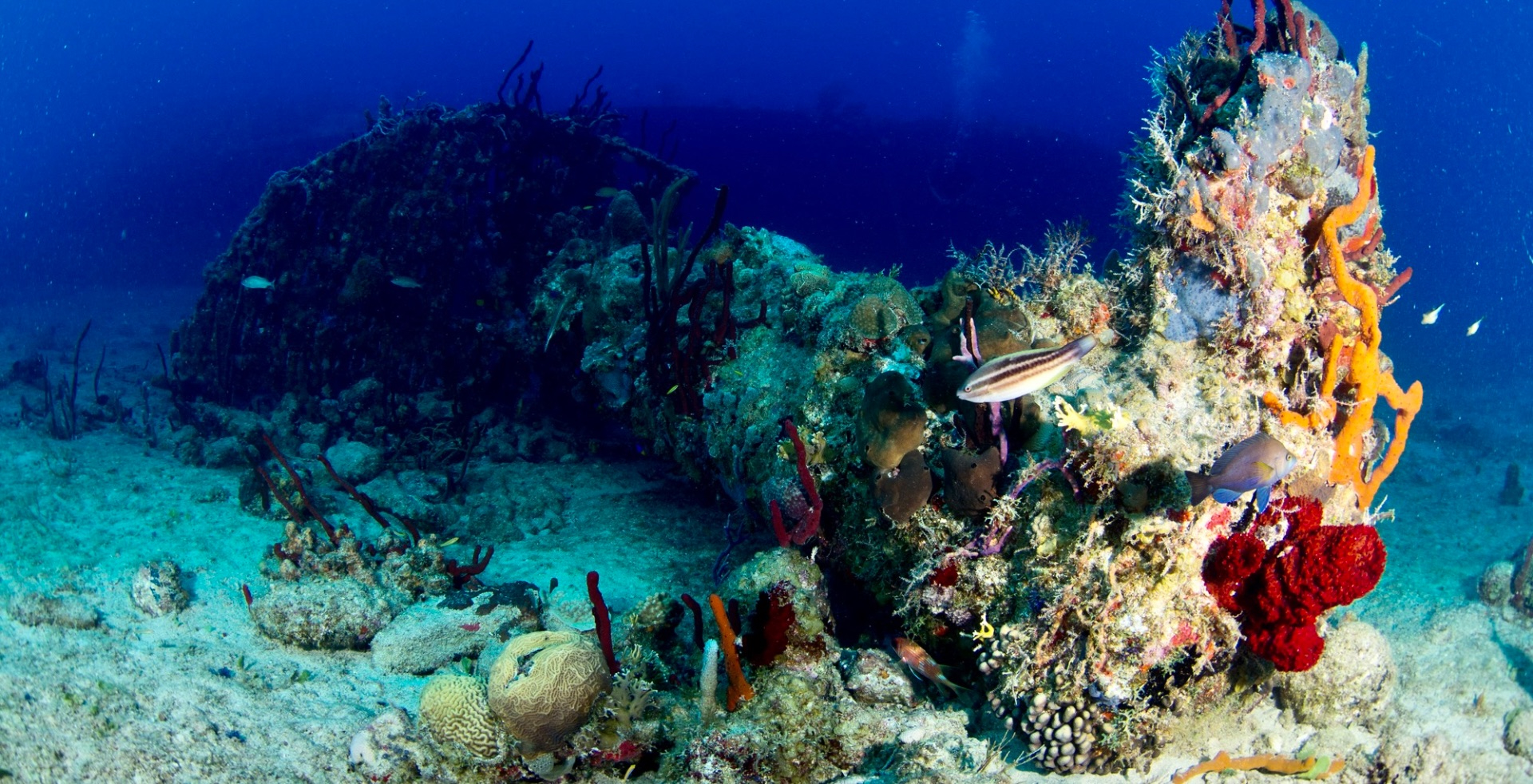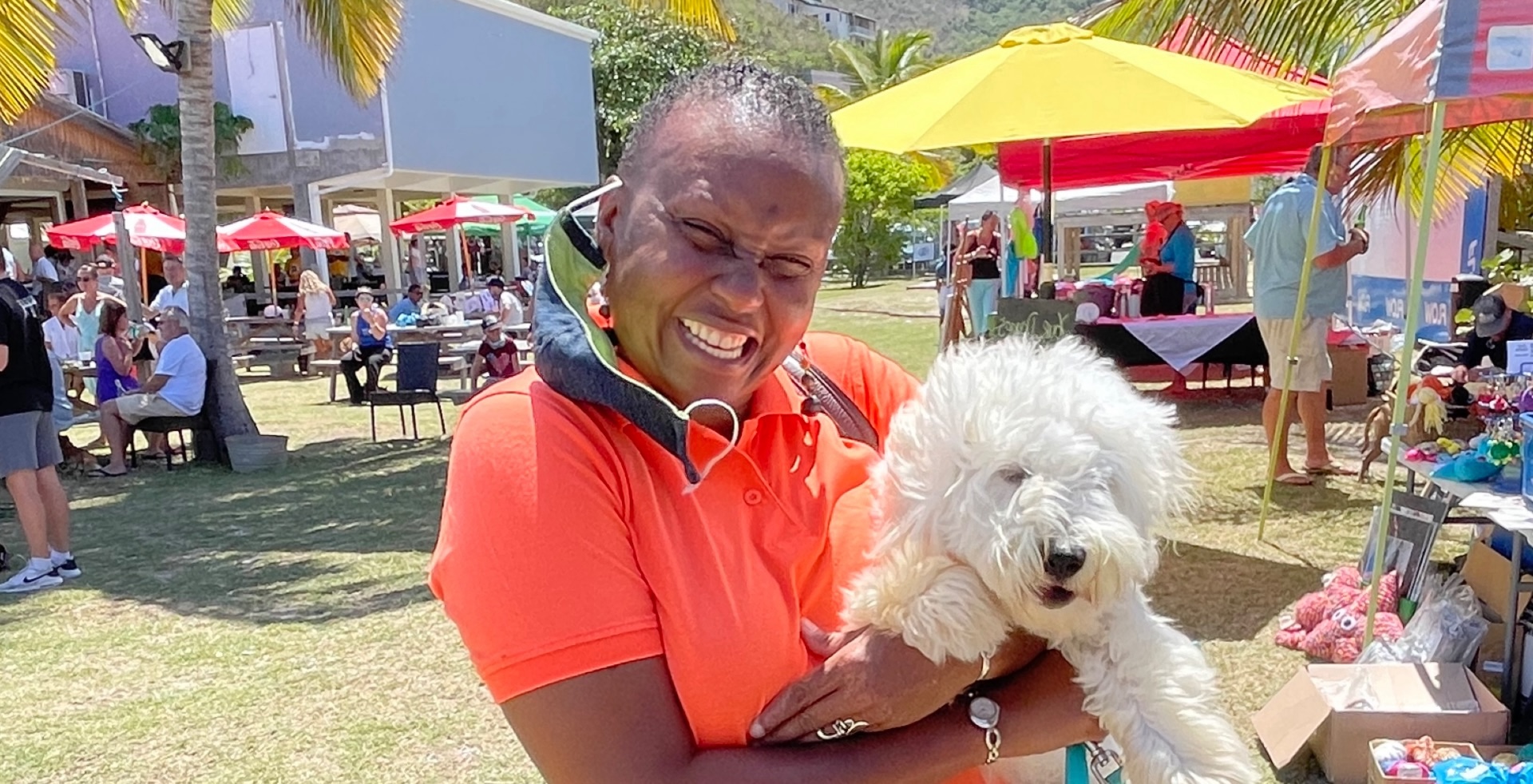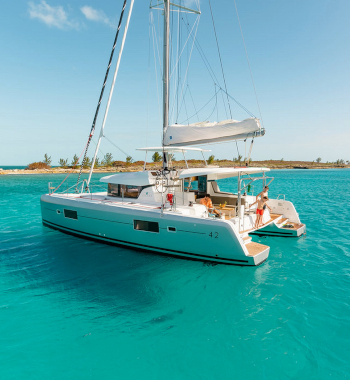The Tortola Sloop: A Sailboat with A Storied Past
By Claudia Colli
The Tortola sloop is an integral part of the BVI’s sailing tradition and an emblem of its boat building past.
At one time the sight of men hammering and sawing boat frames was as common as the fast cargo carrying sloops they produced. But as fiberglass vessels became the norm over the last 50 years or so, the territory’s traditional boat building industry has mostly died out, and it is only recently that there has been renewed interest in this once vibrant trade.
In the mid-’70s, I met a traditional boat builder who had set up shop beneath a tamarind tree on Tortola’s West End where C&D Superette (formerly Big Ben’s) is now. I was fascinated by this aspect of Virgin Islands culture, which even then was fading into a footnote of history.
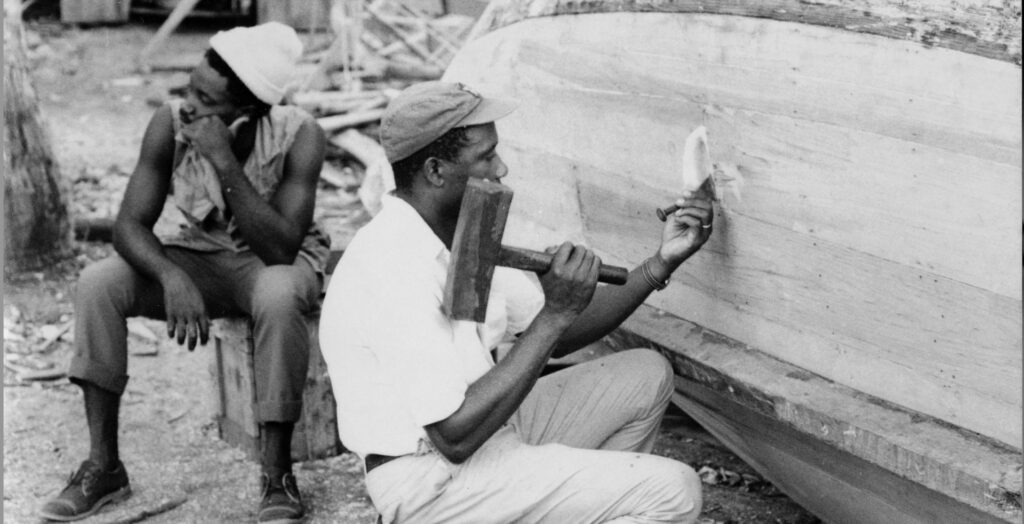
The boat builder’s name was Edwe Hodge, and at 41, he had been building boats at various West End locations for over 20 years. Hodge learned his trade from his father when he was 15. His father constructed Tortola sloops, a boat of elegance and functionality used for inter-island trade. But by the time Hodge took up boat building, these classic beauties were already on the way out. Instead, he concentrated on building fishing boats; first ones for rowing, and then newer designs for outboard motors with flatter bottoms and a keel that was part of the craft’s internal spine. He believed that the local boat building industry was dying out because young people had lost interest in the trade.
Hodge constructed the boat frame from white cedar because of the ease with which it can be fashioned into the required rib shapes. For the planks he preferred imported pitch or white pine because of their greater width. I watched Hodge, carefully plank the hull, insert strips of cottony caulking material between the wooden planks and sand the hull to a smooth finish. He then finished the craft’s interior and the hull with several coats of antifouling paint.
Painting the boat (usually a bright red or blue) was left to the owner. “My boats are hardly ever the same,” he told me. “I try to make them better each time.”
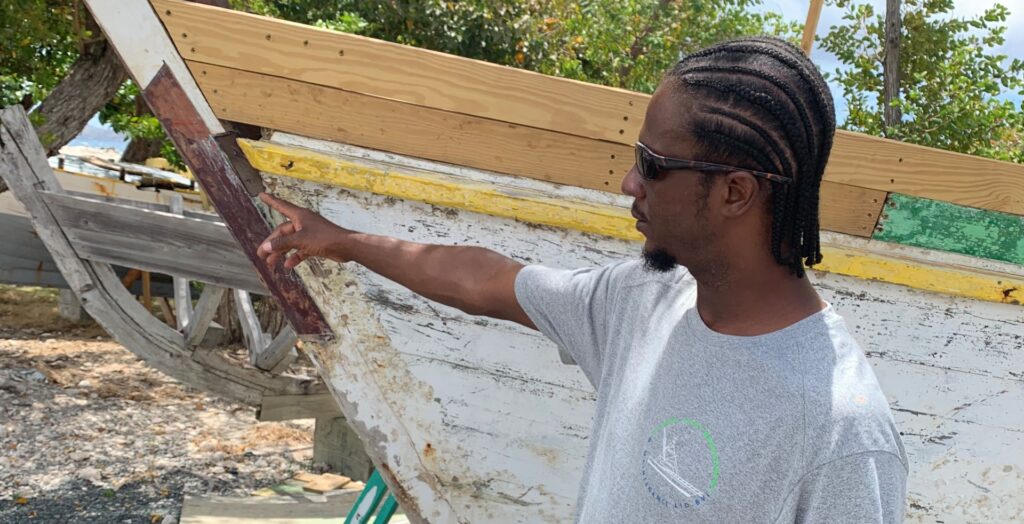
Spanning back almost 200 years, boat construction in the islands began shortly after the abolition of slavery in 1834. The collapse of the plantation way of life prompted the departure of much of the white planter population, and the 9000 or so remaining former slaves were left to live a hand-to-mouth existence by farming and fishing.
The majority of early boats were either rowing boats or small sloops for fishing. But soon, larger sloops and schooners were built to accommodate an increasing trade in produce, livestock and seafood with neighboring St Thomas. Not only were the Virgin Islanders adept in the art of boat building, they developed vessels singular to this area.
According to Edwin Doran, a writer and early observer of these boats, “Tortolan craft are distinctive in form and represent a boat type with a long history built by local artisans in conformance to a long accepted style.”

The Tortola sloop had many unique characteristics including an overhanging stern and stem, pronounced sheer, considerable keel drag, a sloop rig with strongly raking mast and a boom extending far aft of the transom. At one time hundreds of sailing vessels were seen plying these waters. Edwin Doran bemoaned the fading away of these classic boats and the long maritime history here in the Virgin Islands that they represented.
Others interested in preserving the history of the Tortola Sloop include Foxy and Tessa Callwood. Owners of the popular Foxy’s Bar and Restaurant on Jost Van Dyke, and founders of the Jost Van Dykes Preservations Society, the couple spearheaded an exceptional boat building project on their home turf. Endeavour II was built over the course of several years under the guidance of experienced boat builders with several young local apprentices helping out. A hybrid of traditional and modern construction techniques, the boat was intended as a learning tool in boat building construction.
The H. Lavity Stoutt Community College had also been in the forefront of preserving the islands’ classic boat tradition. The college has had five boats under their wing, including the 25’ Youth Instructor, built by the East End boat builder Osmond Davies; the Esmie, constructed by Leondo Nibbs in 2000, and the oldest built in 1914, is Intrepid. The historic sloop, discovered in St. Croix, was purchased by VP Bank and donated to the college. Two other boats, Sea Moon and Moon Beam were built by Anegada boat builder Watson White. Unfortunately several of these precious crafts were damaged in Hurricane Irma in 2017.
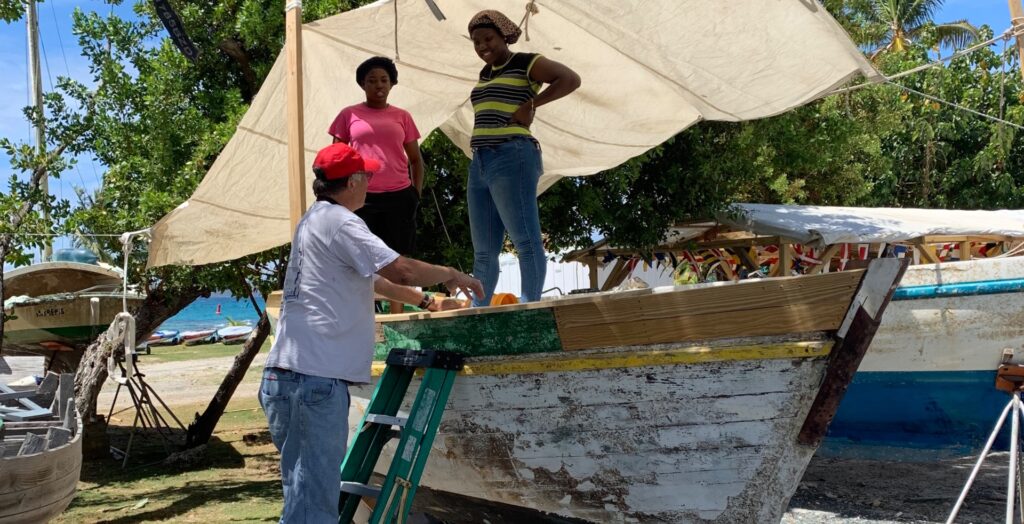
Geoffrey Brooks, a local maritime expert and historian, has been instrumental in the upkeep and promotion of the sloops. He is the author of the children’s book, Building a Virgin Islands Sloop, the Story of Sea Moon, which was illustrated by noted BVI artist Lutai Durant, and depicts the boat building efforts of Anegada boat builder, Watson White.
Rekindled interest in the boats, both here in the VI and throughout the Caribbean, was highlighted in the documentary Vanishing Sails, an inspiring documentary about the traditional boat building industry in the small Grenadine island of Carriacou. Vanishing Sails, can be rented by going to the filmmaker’s website. https://vanishingsail.com To watch a trailer go here: https://www.youtube.com/channel/UCnb4PiSP93lNwmix87fvLOQ
Artist Aragorn Dick-Read, a long-time supporter of Caribbean classic boats, noted that indigenous cultures, including the Taino Indians that once populated the BVI, hand-built canoes to traverse the seas around these islands. Aragorn, along with a group of Carib Indians in Dominica, built such a canoe which he now keeps ooutside his studio in Trellis Bay on Beef Island.
“As these classic Caribbean boats decrease in numbers, they have become increasingly valuable, and a resource to be treasured,” he said. Aragorn, along with many other traditional boat enthusiasts, hope that local preservation efforts will spark further interest in keeping the spirit of the BVI’s boat building tradition alive.
Additional information on BVI history can be found at:

